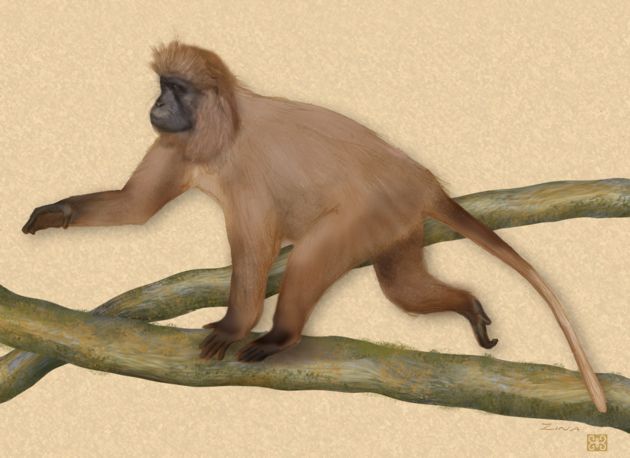New Monkey Species is First in Africa for 20 Years

The highland mangabey could elude scientists for only so long.
This secretive monkey was recently found in the trees of Tanzania, becoming the first new species of monkey discovered in Africa in over 20 years. The find was announced today.
Its body is about three feet long and covered with shaggy brown hair, except for an off-white belly. The long coat comes in handy since the Highland mangabey lives at high elevations where the temperatures frequently drop below freezing.
Highland mangabeys (Lophocebus kipunji) have two distinguishing characteristics. They sport a mullet-like hair style - a long crest of hair on its forehead and long hair on the back and sides of its face. They also have an unusual call, described as a "honk-bark" by the discoverers.
Surprised scientists
The discovery itself is unique since the monkey was actually found by two different groups, each believing they were the first to spot the primate.
First was Tim Davenport's team of biologists from the Wildlife Conservation Society, who first saw the monkey hiding on the sides of Mt. Rungwe, a 10,000 foot volcano in Kitulo National Park.
Sign up for the Live Science daily newsletter now
Get the world’s most fascinating discoveries delivered straight to your inbox.
"This discovery proves that there is still so much to learn about the more remote and less well-known areas of Tanzania, and Africa as a whole," said Davenport, director of the WCS Southern Highlands Conservation Program.
The second spotting occurred more than 230 miles away and a few months later in the Ndundulu Forest Reserve in the Unzungwa Mountains. Carolyn Ehardt's group from the University of Georgia was studying another species of mangabey monkey when they came across the new species.
Last October, the two groups became aware that they had made the same discovery, and joined forces to publish their findings in the journal Science, in the May 20 issue.
Already endangered
"A large, striking monkey in a country of considerable wildlife research over the last century has been hidden right under our noses," said Russell Mittermeier, chair of the Primate Specialist Group of IUCN - The World Conservation Union's Species Survival Commission. This discovery shows just how little we know about our closest living relatives, he said
The highland mangabey is already considered endangered. Researchers estimate a population of only 500 to 1000. In the Southern Highland forests, the trees they live in are illegally logged, further jeopardizing their future, according to Davenport.
The monkey's other known habitat, the Ndundulu Forest Reserve is safe from loggers, but the population of the highland mangabey in this region is small and limited in distribution.
John Robinson, senior vice-president and director of International Conservation Programs for WCS, hopes that this discovery will strengthen conservation efforts in this area. "This new species of monkey should serve as a living symbol that there is hope in protecting not only wild places like Tanaznia's Southern Highlands, but the wonder and mystery they contain," Robinson said.
Related Stories










